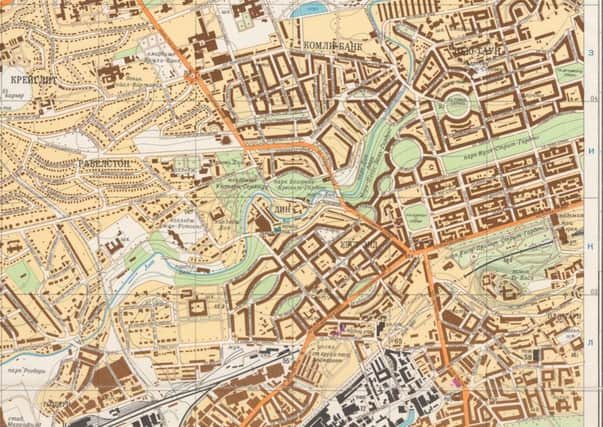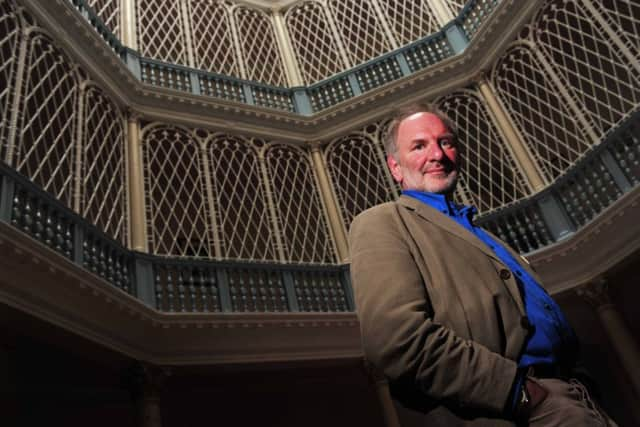KGB’s map of Edinburgh inspired new Scots poetry


Tom Pow, the first Bartholomew writer-in-residence at the National Library of Scotland, discovered the map while poring over a collection of around two million rare and unusual maps that he was given access to for three months last year.
The award-winning poet, whose new collection is called Concerning the Atlas Of Scotland And Other Poems, said it was the 1983 Soviet map of Edinburgh which fired his imagination.
Advertisement
Hide AdThe map, with street names in Cyrillic script, was drawn up under the directives of the KGB in large warehouses outside Moscow and was intended for military use and for tanks driving around the city. It detailed factors such as the width of roads, type of road surfaces, height of buildings and bridges, as well as the locations of military installations, barracks and transport networks.


Much of the information was believed to have been sent from Edinburgh to Moscow by staff working in Russian consulates and undercover operatives.
Pow, who lives in Dumfries, said; “Of all the maps I saw in my time behind the scenes at the library, it was the 1983 map which did it for me. It was so disorienting, it had a dark purpose. I know Edinburgh pretty well, I was born in Craigleith, used to traverse the city to go to school, and I still go back. But it was just so disconcerting, I couldn’t work out where I was despite Edinburgh’s simple geography because of the Russian Cyrillic alphabet.
“A map is an approximation, but no map can be a complete representation of a place, so we rely on names.
“Yet while I was floundering, a Soviet tank commander could find his way to my door, I was amazed at the reach and interest of the Soviet Empire to want to know so much about Edinburgh.”
Pow’s poem The Soviet Map Of Edinburgh includes the lines: “Yet there must have been a mapmaker – one of the 40,000 – who, in some vast Moscow hanger, imagined this map animated in the field…More likely, he’d see tanks rolling along Princes Street; a rash of proscriptions; a secret police, sifted from collaborator and believer alike; shadows haunting every street corner. After which: a grey haar that feels as if it’ll never lift.”
Advertisement
Hide AdPow, who has won a host of awards, including the Scottish Mortgage Investment Trust Scottish Book Award in 2009 with Dear Alice – Narrative of Madness, also includes a range of works in his compilation including ones inspired by the Blaeu Atlas of Scotland of 1654 and the first engraving of the Treasure Island map.
The Bartholomews were an Edinburgh map-making dynasty which spanned six generations beginning in the 18th century and became the world’s pre-eminent publisher of maps and atlases.
Advertisement
Hide AdSoviet map expert John Davies, author of Uncle Joe Knew where You Lived – The Story Of Soviet Mapping Of Britain”, in Sheet Lines, published in the Journal Of The Charles Close Society, wrote: “Every Soviet president from Stalin to Gorbachev, and all high-ranking officers, knew not only where you lived but how to get there by tank.
“They knew the width of the roads, the height of the bridges, the depth of the rivers, the names of the streets. And they knew the exact location and purpose of every building of possible strategic importance, even those which were omitted from OS maps.”
Paula Williams, curator of maps, mountaineering and polar collections, at the NLS, said she had been fascinated by Pow’s work.
“It is always interesting to see how other people look at your collection. Tom’s got a very different way of looking at things and can pick up a map and tie it into his personal experiences.
Concerning The Atlas Of Scotland And Other Poems by Tom Pow. Published by Polygon, imprint of Birlinn, £12.99